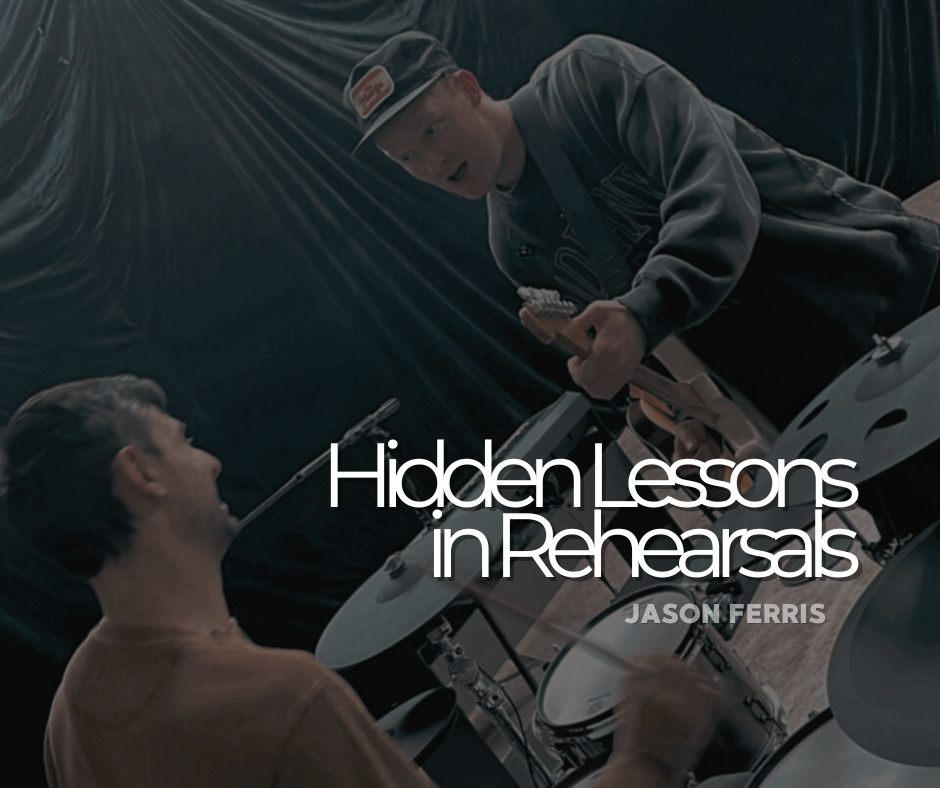How to Adjust Your Setlist for Any Audience and Venue
You might plan a great setlist, but what if the crowd isn’t feeling it? Great performers read the room and adjust in real time.
Your setlist isn’t just a list of songs—it’s the blueprint for an unforgettable live performance. The best artists know how to craft a set that adapts to any crowd, any venue, and any vibe. Whether you’re playing a packed festival, an intimate coffee shop, or a high-energy youth event, the way you shape your setlist can make or break your connection with the audience.
In our upcoming book Crafting the Perfect Setlist, we break down exactly how to create a dynamic, emotionally engaging show that keeps your audience hooked. But today, let’s dive into five essential ways you can adjust your setlist for any audience and venue.
1. Know Your Audience Before You Step Onstage
The energy in the room will be different at a late-night club than it will at a Sunday morning church service. Before locking in your set, ask:
✅ Who is your audience? Age, background, and musical preferences all matter.
✅ What’s the event’s purpose? Are they there to dance, worship, chill, or be entertained?
✅ What’s the vibe? A corporate gala will have a different atmosphere than a college house show.
Setlist Tips:
Choose high-energy openers for young, lively crowds and softer intros for more intimate settings.
Be flexible—have a few songs ready to swap in if the energy isn’t where you expected.
2. Adapt to the Venue’s Size and Sound
A small venue like a coffee shop or living room show requires a more personal, stripped-down approach. A large venue or festival demands bigger arrangements and moments that reach the back row.
Setlist Tips:
For smaller venues: Lean into storytelling, acoustic arrangements, and crowd intimacy.
For larger spaces: Plan big musical moments, use dynamic changes to keep attention, and engage beyond the front row.
(In our book, we break down how to structure your set for different venues, so your performance always feels intentional. Stay tuned for the release!)
3. Adjust for Time Constraints
Not every show allows for a full-length headliner set. Whether you’re playing a 15-minute festival slot or a 90-minute solo concert, you need a plan.
Setlist Tips:
Short set? Choose your strongest, most engaging songs—cut the fluff!
Long set? Build emotional highs and lows to create dynamics and avoid energy burnout.
4. Shift Your Energy and Transitions Based on Crowd Response
You might plan a great setlist, but what if the crowd isn’t feeling it? Great performers read the room and adjust in real time.
Setlist Tips:
If the crowd is disengaged, introduce interactive moments—singalongs, handclaps, or a personal story.
If they’re loving a certain energy, extend that experience! Don’t cut off something that’s working.
If something isn’t landing, have a backup song or transition ready to shift gears.
(Our book dives deep into how to structure transitions so your set flows effortlessly—no awkward pauses!)
5. Have a Purpose Behind Your Setlist
Every great set has a clear beginning, middle, and end—even when adapted for different audiences. Are you taking your audience on an emotional journey? Ending on a high note? Leaving them wanting more?
Setlist Tips:
Opening: Start strong with an attention-grabbing experience tailored to your audience.
Middle: Build variety—don’t let the energy stay one-dimensional.
Closing: Leave a lasting impression with a powerful closer that resonates with the audience.
Want to Master Your Setlist?
This is just the tip of the iceberg when it comes to setlist strategy. In our book Crafting the Perfect Setlist, we take you step by step through:
✅ How to create emotional arcs in your set
✅ What makes an opener, middle, and closer work
✅ How to build audience connection through your song order
✅ Real-life examples from successful live performances
Which of these tips will you try first?
Drop a comment and let’s talk setlist strategy!
Join our Purpose Subscribers to be notified FIRST about new blog posts, video releases and other exciting performance tips!
Are you ready to build habits that throttle your career forward instead of hinder it? We would love to get to know you and learn about the challenges in your live performances so that you can overcome them all. Schedule a FREE discovery call with us today to get started!




































